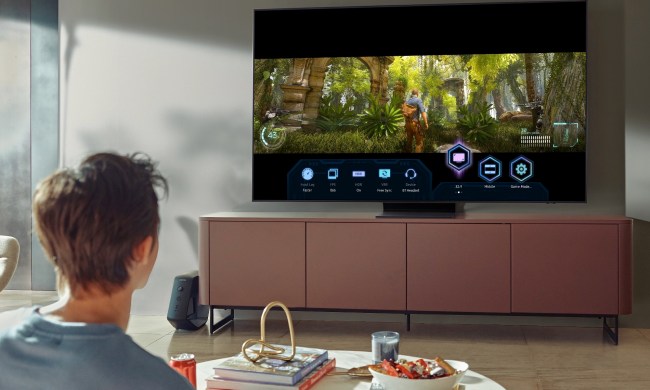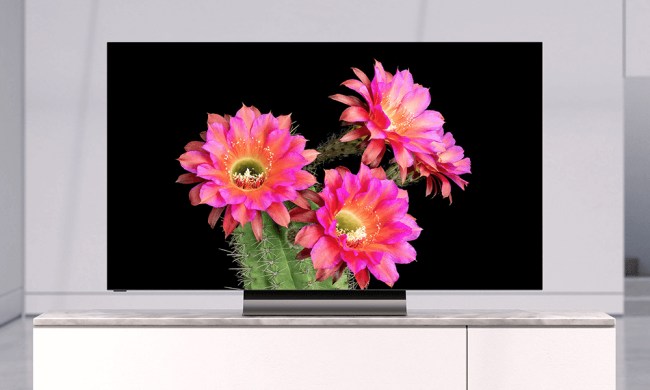If you’re a bit confused about the basics of Rabbit TV, don’t feel bad. The “as seen on TV” service is a lot like magicJack — most of us have heard about it at one time or another, but we have no idea what it actually is or what it does. Rabbit TV started out as a bright red USB dongle that promised “free access to 5,000 internet TV stations,” putting the word “internet” in very small type. Eventually, the company cut the USB stick and rebranded as Rabbit TV Plus, offering service to anyone with a web browser (assuming that web browser can run Flash). The word “free,” was slightly misleading, however, since the service initially charged $10 a year.
More recently, the price has gone up to $24 per year, which is still cheap compared to services like Sling TV or DirecTV Now. But what exactly are you getting for your money? To start, Rabbit TV Plus — also referred to on the company’s website as Rabbit TV, RabbitTV, or RabbitTV Plus, confusingly enough — doesn’t offer any content of its own, but is essentially little more than a content aggregator. And, in fact, in our final section we outline some similar alternatives that may well outdo Rabbit TV Plus at its own game. But first, we’ll dive into the nitty gritty of this mystery service to see what it offers, and just as importantly, what it doesn’t.
What does Rabbit TV Plus offer?
As mentioned, Rabbit TV Plus subscription doesn’t give you access to anything you can’t already get for free online. Instead, the service prowls the web for online video and serves it up in a TV Guide-style buffet that lets people pick and choose what they want to watch. In addition to aggregating content from various free streaming sources online, Rabbit TV Plus folds in movies and TV shows from Netflix and Hulu, assuming you have subscriptions to those services.
It will even fold in movies and TV shows from Netflix and Hulu, assuming you have a subscription to those services.
In recent years, the service has moved away from its claims of “thousands” of free TV channels, swapped for a similarly bold tagline: “all the world’s entertainment in one place.” Available live broadcasts include networks like The CW, PBS, Ion, Univision, Telemundo, This, and MeTV (all of which can be found over the air with an HD antenna), as well as news and shopping channels like Bloomberg, MSNBC, QVC, and HSN. The service has also added several international channels such as Eurosport, RT, and ZDF, among others.
It’s tough to put together a solid number on exactly how much content Rabbit TV Plus offers. The service’s website claims 2,000+ live channels, as well as 100,000+ movies, 400,000+ TV episodes, and 20,000+ streaming radio stations. But just a little bit lower on the page it says 500+ streaming channels are available to watch on an iPhone, iPad, or smartphone.

What makes this even tougher to gauge is that recently, Rabbit TV Plus has been moving increasingly toward on-demand content, and more specifically, on-demand content that you need to pay for on top of your subscription. It’s possible (and recommended in most cases) to browse only free content by selecting “Free Only” in the top-left corner of the site. Otherwise, you’ll see a “Watch Free” button for some shows and movies, while others will show an “Order Now” button. Sometimes you’ll see both buttons, which means some episodes of a show are available for free, but others are pay-per-view, either individually or by the whole season.
To make things even more complex, an extra tier of channels requires an active cable subscription to watch, making the service’s claim on its website that it is a “great alternative to cable” seem a little more dubious. Channels that require a cable subscription include ESPN, TBS, TNT, TruTV, Cartoon Network, Fox, AMC, and Disney, similar to the TV Everywhere apps you would find on a smart phone or streaming device.
It’s tough to put together a solid number on exactly how much content Rabbit TV Plus offers.
Millennials might not be impressed by Rabbit TV Plus, but the service isn’t really going after the tech savvy among us. The primary audience is made up of the 30-65+ age group, specifically those who don’t know where to look or don’t care to try looking for the most accessible online content. It was initially targeted at anyone on a PC or Mac — including those who barely know how to use them — to easily access streaming TV through simple selections. And since there is nothing to actually install, the simple register-and-log-in process makes it pretty simple. And more recently, Rabbit TV Plus has added even more ways to watch.
Which streaming devices are supported?
Though Rabbit TV Plus originally started out by limiting compatibility to Windows PCs and Macs, its move to a browser-based platform means it can work on a Chromebook or Linux machine. It can also work on select phones and tablets, though access is limited on devices that don’t support Adobe Flash, the number of which is increasing.
Until relatively recently, Rabbit TV Plus was available on both iPhone and Android devices, though it required a third-party browser in order to function. Now the app has disappeared from the App Store, leaving only the Android version. Even with Android phones, there is a catch: The Rabbit TV Plus app isn’t available in the Google Play Store, so you’ll have to go to the company’s website in order to download and install the APK file, something that the ideal Rabbit TV Plus user probably isn’t equipped to do on their own.

Is it a scam?
The short answer is no, Rabbit TV Plus is not a scam, but as you’ll see in the section below, that doesn’t mean it’s the best of its kind. Rabbit TV’s detractors were initially quick to judge it as illegitimate mainly because it doesn’t offer much — if anything — that isn’t already freely available on the web, but the company’s changes in its marketing definitely make it seem more legitimate. That said, the platform does seem to use the word “free” a lot for a service that costs $24 a year, affordable as that is.
There are, of course, some notable caveats to consider. Since Rabbit TV Plus can only show movie content which is already free, the selection is less-than-enticing. To get a feel for what you can expect, go visit Crackle and have a look at what it offers. Also, local TV station access from across the nation isn’t delivered as promised. The last time we checked, there was precious little available from New York, and Oregon (where Digital Trends is headquartered) wasn’t represented at all.
Local TV station access from across the nation isn’t delivered as promised.
The online TV segment has also changed a lot since Rabbit TV launched, and even since it rebranded as Rabbit TV Plus. More and more viewers, regardless of age, are watching their favorite shows and movies using streaming services, and many are actively looking to escape traditional TV’s old-school channel surfing method. Not to mention, competition from the likes of Sling TV, DirecTV Now, PlayStation Vue, YouTube TV, and Hulu with Live TV offers much of what users may find appealing about Rabbit TV Plus, but with more content that actually want to watch. The cost is considerably higher than Rabbit TV Plus, but all of those services have options much cheaper than most cable packages.
What are the best Rabbit TV Plus alternatives?
To keep things fair, we’ll leave the services mentioned above out of this since they do cost a good deal more than you pay for Rabbit TV Plus. Besides, we’ve already got a comparison of those services if you’re interested in seeing how they stack up. That said, there are two options that offer something very similar to this service, and one of them even comes from Rabbit TV Plus’s parent company, FreeCast.
SelectTV
For all intents and purposes, SelectTV seems like FreeCast decided to take the lessons it had learned from Rabbit TV and start over from scratch with a product that isn’t exactly the same, but is very similar. How close are they? Look at the Rabbit TV Plus website, then the SelectTV website. Notice any similarities?
Like Rabbit TV Plus, SelectTV costs $24 per year, but it also offers a monthly subscription for $3 per month. Yes, you’ll end up paying an extra $12 for a year if you choose this method, but it does allow you to try out the service for less money if you’re not sure you want to go all in. SelectTV is also available on a far greater range of platforms, with apps for Roku, Apple TV, Amazon Fire TV, Xbox One, iOS, and Android devices, as well as your browser.
Taking all that into consideration, it seems like if you’re considering Rabbit TV Plus, you’ll want to try SelectTV first. At this point, it seems that Rabbit TV Plus remains a separate service for those who already subscribed, but we wouldn’t be surprised to see it folded into SelectTV at some point in the future.
Pluto TV
Pluto TV launched in 2014, and seems a lot like what Rabbit TV originally intended to offer: Various channels of content, most (if not all) of which can be found elsewhere on the internet, presented in a live TV format (though on-demand movies are also available). The major difference here is that Pluto TV is completely free, earning all its revenue from advertising instead of subscriptions.
Channels are organized into sections like Movies, News, Sports, Comedy, Entertainment, and Life + Style. It seems that Pluto is aiming for younger viewers than Rabbit TV Plus, however, with additional sections like Chill Out and Geek + Gaming featured prominently, as well as several radio stations provided by Dash Radio. You’re not going to find the latest movies or TV series here, but you’re not likely to find them on Rabbit TV Plus or SelectTV either — at least not without paying extra.
Like SelecTV, Pluto TV is available on a far greater range of devices than Rabbit TV Plus, including Roku, Apple TV, Amazon Fire TV, Google Chromecast, PlayStation 4, and a number of smart TVs.
In the end, it’s hard to say who exactly Rabbit TV Plus is for. Both of the above services provide the same or similar functionality, and are either available on more devices or offer more flexible pricing (or are free). Then you have options like an antenna and OTA DVR, or the ever-growing number of options for watching movies for free online. If you or a relative are using Rabbit TV Plus and are happy with it, there’s probably no reason to switch for now, but it couldn’t hurt to look at what else is available.


